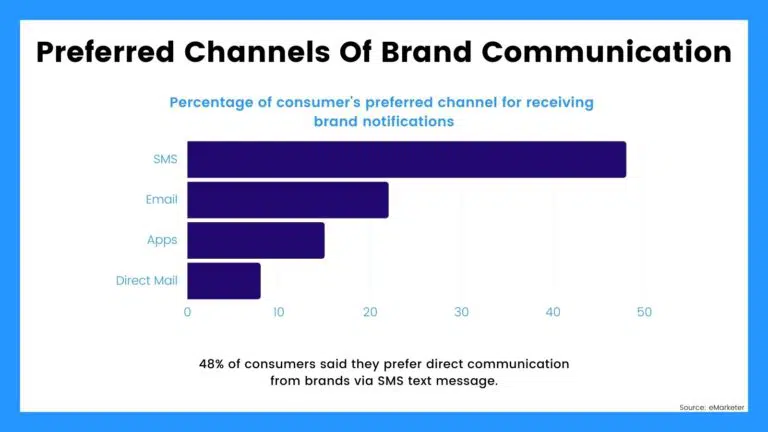Increasingly, customers’ expectations surrounding last-mile delivery have changed dramatically over the last decade.
They want full transparency and visibility over their delivery:
- Where their package is
- What time it will be delivered
- The various options available to them if they’re not in to receive it
- Real-time tracking of the delivery vehicle.
The list goes on.
The customer yearns to feel in full control of their delivery experience, so that they receive their goods at their own convenience.
“In retail, few experiences have the potential to damage a company’s reputation like a failed delivery.“ – Loqate
This starts with retailers and logistics providers providing the customer with all of the necessary information, and flexible delivery options, in the most efficient way(s) possible.
A company’s reputation can often hinge on delivery day, and others such as Amazon are built on it.
When there are customer expectations to be met, businesses have to deliver.
A poor delivery experience can not only tarnish a company’s reputation in the eyes of the consumer, but it can hurt their revenue too.
57% of consumers said that they would avoid using a retailer again if they had a negative delivery experience.
It is an integral part of the supply chain – particularly for businesses that manage the last-mile delivery process and ship goods to their customers in their own vehicles.
When done correctly, last-mile delivery adds lifetime value to a brand and builds brand loyalty, leaving the customer with a positive final impression outside of the products your company sells.
The true cost of failed deliveries
Research has found that failed deliveries are still a widespread issue for eCommerce organisations, with 99% admitting some deliveries go wrong, and 24% saying more than 1 in 10 orders fail to be delivered at the first attempt.
There are always a variety of causes for failed or late deliveries, with a high percentage being attributed to miscommunication.
42% of UK consumers said miscommunication was the key reason as to why they have missed multiple deliveries in the past, so there is merit in assessing which messaging channels are most likely to reduce this figure.
Failed deliveries equate to a lot of re-deliveries to plan, time wasted, and agitated customers. All of which impact the financials of any organisation.
Not to mention the wider impact this has on the environment.
Providing customers with accurate delivery updates, through communication channels where they’re most likely to be seen as soon as possible, can help your businesses to eliminate some of the £200,000 average annual cost of failed deliveries.
It’s said to cost £11.60 per failed delivery, meaning that many businesses end up losing money on orders with small profit margins.
And in the eyes of the customer, it’s often not their fault either. 41% of customers place blame on the retailer if their order is late, or if they miss their delivery.
It’s a lose-lose situation.
The responsibility lies with retailers to provide customers with accurate delivery information to customers and in the places they’re most likely to see it (although customers do have to ensure that they’ve provided accurate information too!).
Increasingly, that’s in the palm of their hand, through communication channels such as SMS text messages, email, Whatsapp and push notifications.
But, the question remains: which is the most effective channel for sending customers delivery updates?
To quantify which is the most effective we’ll be looking in particular at engagement rates, as the communication channel that is engaged with the most (and quickest) is the more likely channel in which delivery updates will be seen on and interacted with.

SMS & WhatsApp leading the way in consumer engagement
“SMS remains an effective, yet underutilised, mobile tactic among marketing leaders and is particularly valuable when used in conjunction with mobile techniques such as wallet, web and native applications to orchestrate a deepening level of customer engagement.” – Charles Golvin, Research Director at Gartner for Marketers
SMS and WhatsApp are currently the top ranking channels for customer engagement as they have the highest open rates – 98% and 99% to be precise – as customers often receive less messages on their texting applications than they do on others such as email, so open rates are greater.
The principles of the two are almost identical, however WhatsApp is the cheaper alternative (particularly for the consumer as it is free and doesn’t incur carrier costs), but this comes at the price of needing a working data connection or Wi-Fi to function.
The first 1,000 conversations with customers each month are free for businesses on WhatsApp, so you can start building relationships with your customers before any costs are incurred.
For businesses that send SMS text messages and WhatsApps they benefit from fast, reliable modes of communication that are instantaneous and don’t get lost in spam folders or other filtering processes.
They are channels that consumers check frequently too.
1 in 3 consumers check their SMS text notifications within one minute of receiving a text, and 53% of consumers check their text messages at least 11 times a day.
And WhatsApp boasts even better statistics in terms of engagement rates.
80% of WhatsApp messages are reportedly seen within the five minutes of receiving them, and consumers check the app at least 20 times a day.
There’s a high percentage chance therefore that consumers will see any delivery updates sent via SMS or WhatsApp, making them an ideal channel for communicating tracking links, timeslots, ETAs etcetera.
Data shows that they are increasingly becoming the preferred channel in which customers want to receive updates from brands, be that marketing promotions or delivery updates.
In a recent study 75% of consumers said that they want to receive text messages from brands about tracking their order.

Despite this not enough businesses are capitalising on the high engagement rates they have to offer given that a little over half of business owners said that they text their customers.
Businesses should see sending updates through these channels as an investment, both in their customer service experience and through the long-term reduction of failed deliveries that will save a significant amount of money.
Email is losing its dominance as a communication channel
Depending on the source the average email open rate generally ranges from 18% to 23%.
Inboxes tend to become oversaturated with promotional emails and other forms of content deemed unnecessary to read, the consensus being that people are more inclined to give their email details to businesses than their phone number.
Research has also found that consumers spend 143 minutes, over two hours a day checking their personal emails, and 99% of consumers check their inboxes at least once a day.
It still remains a heavily engaged communication channel, but its effectiveness as a mode for communicating delivery updates comes into question considering it takes a recipient on average 6.5 hours to view an email.

Receipt-to-read times languish behind SMS and WhatsApp, and push notifications boast similar times to the aforementioned.
As open rates continue to decline, deliverability issues grow and engagement levels remain low in comparison to other channels, email should become a less reliable way of communicating delivery updates.
Push notifications are starting to rival other communication platforms
Push notifications have become established as a valuable communication tool over recent years, and now form an effective component of mobile marketing.
There are several reasons as to why.
Firstly, they’re free to send, and can be a cost-effective alternative to sending SMS text messages after the initial development work has been completed.
Secondly, customers are given full control over the push notifications that they receive, and won’t fall victim to scam text messages telling them that they need to pay a fee to receive their fictitious Royal Mail parcel.
Because of this, push notification open rates are seven times higher than that of email, and they are read sooner too, with 40% of users interacting with push notifications within an hour of receiving them.
Again, the consensus may be that mobile users tend to turn off notifications from their email applications by virtue of receiving so many each day, that they forgo them altogether to reduce the amount of notification activity on their device.
As a result, push notifications become a much more prevalent means of getting your brand in front of your customers and providing them with the information they need to see.
Despite this, push notifications are generally underutilised for businesses that have their own application, as less than 50% of mobile apps use push notifications.
The issue with push notifications from a business perspective tends to be accessibility.
You can easily run push notifications through your website via web browsers such as Google Chrome, however, not all businesses have a mobile application as well.
Mobile apps are costly and require significant development work, so SMS, WhatsApp and email are much more relevant forms of customer engagement for many businesses, and typically those with a smaller budget.
Want to learn more about how SMS delivery notifications improve your customer service?
Frequently Asked Questions
Research has found that WhatsApp is the most frequently checked channel, and the average person opens the application at least 20 times a day. This is unsurprising as it is the most downloaded mobile application of all time on the Google Play Store, making its popularity unquestionable.







